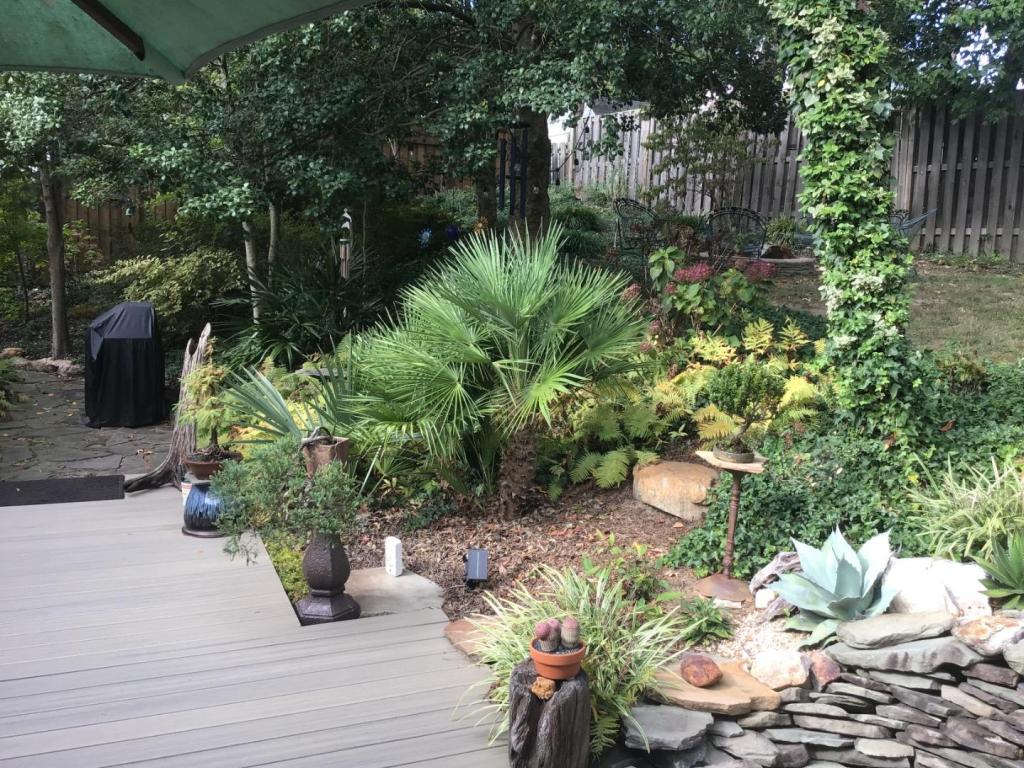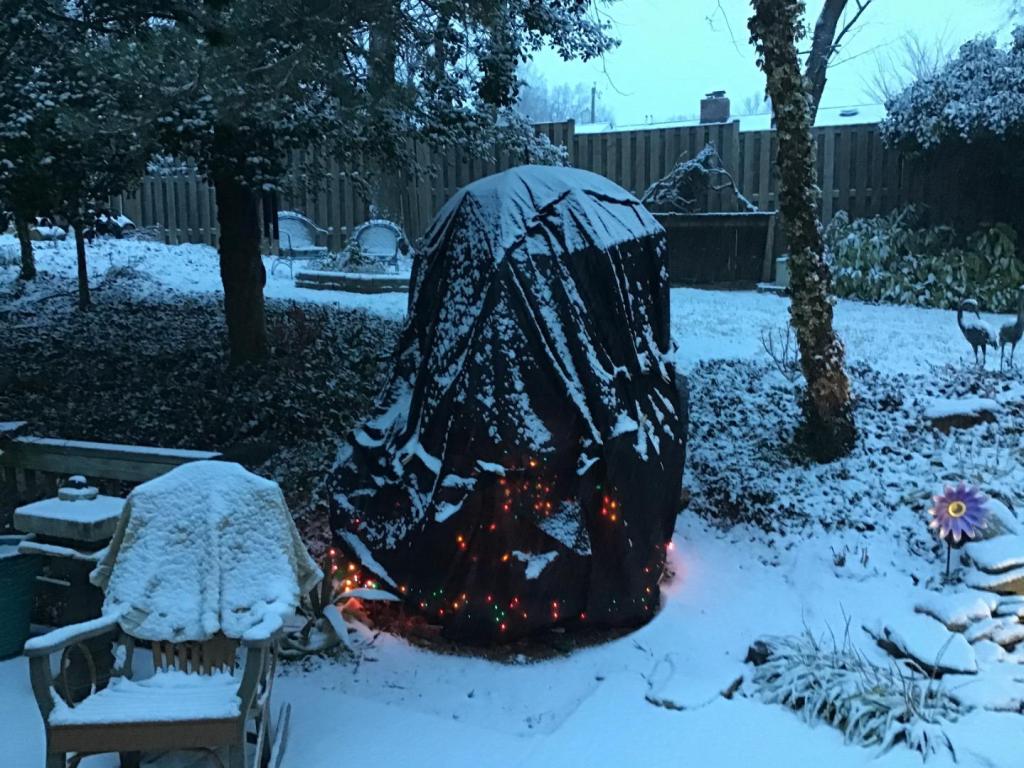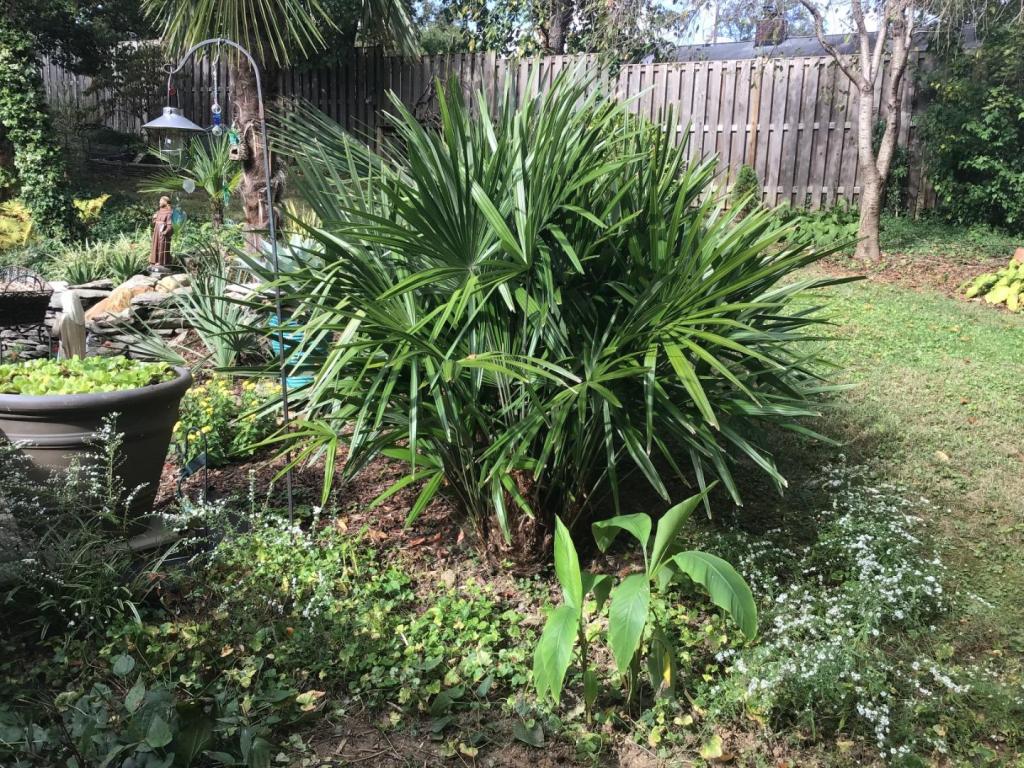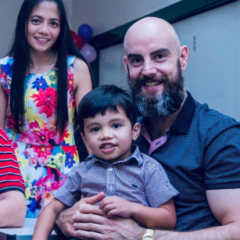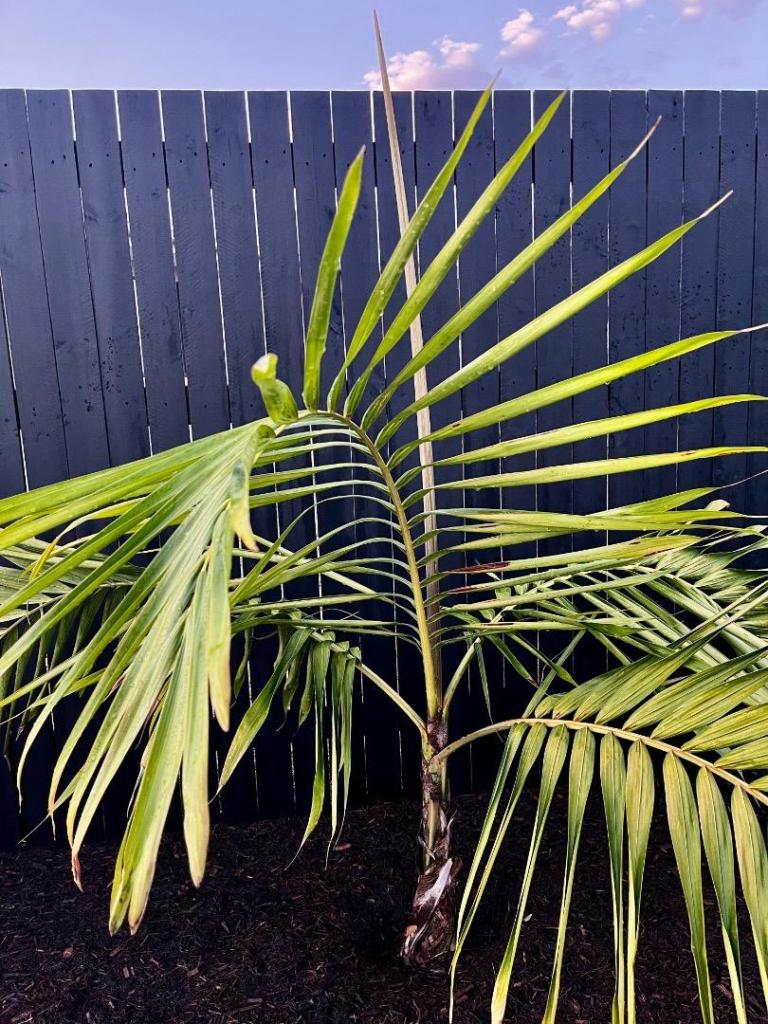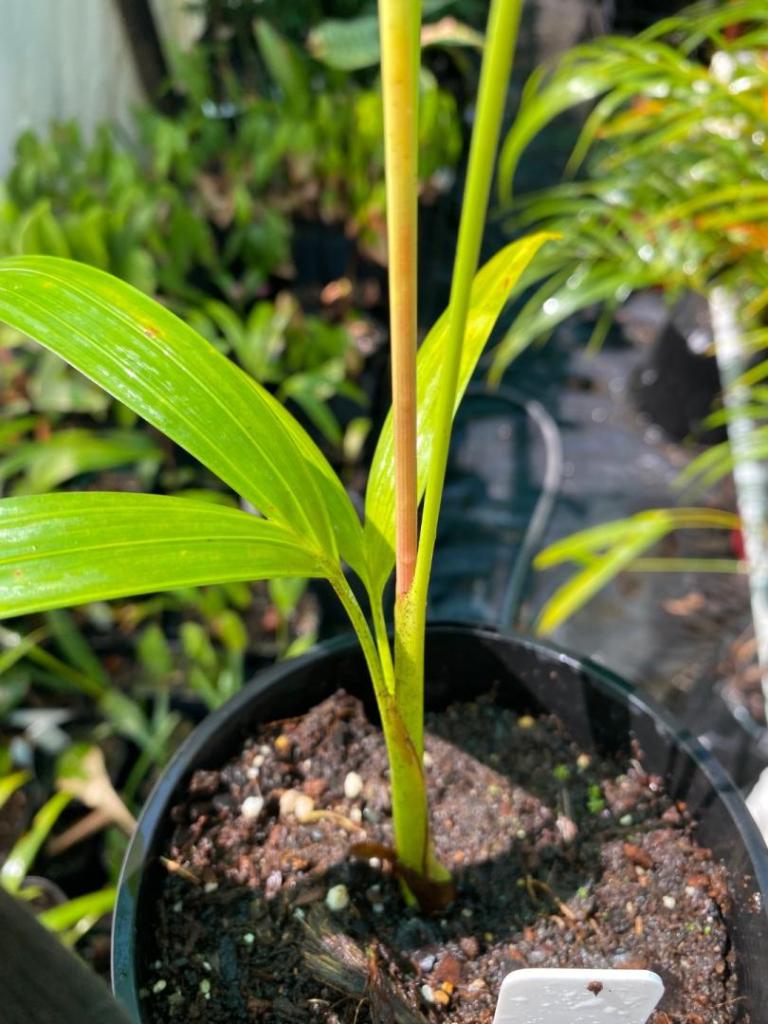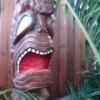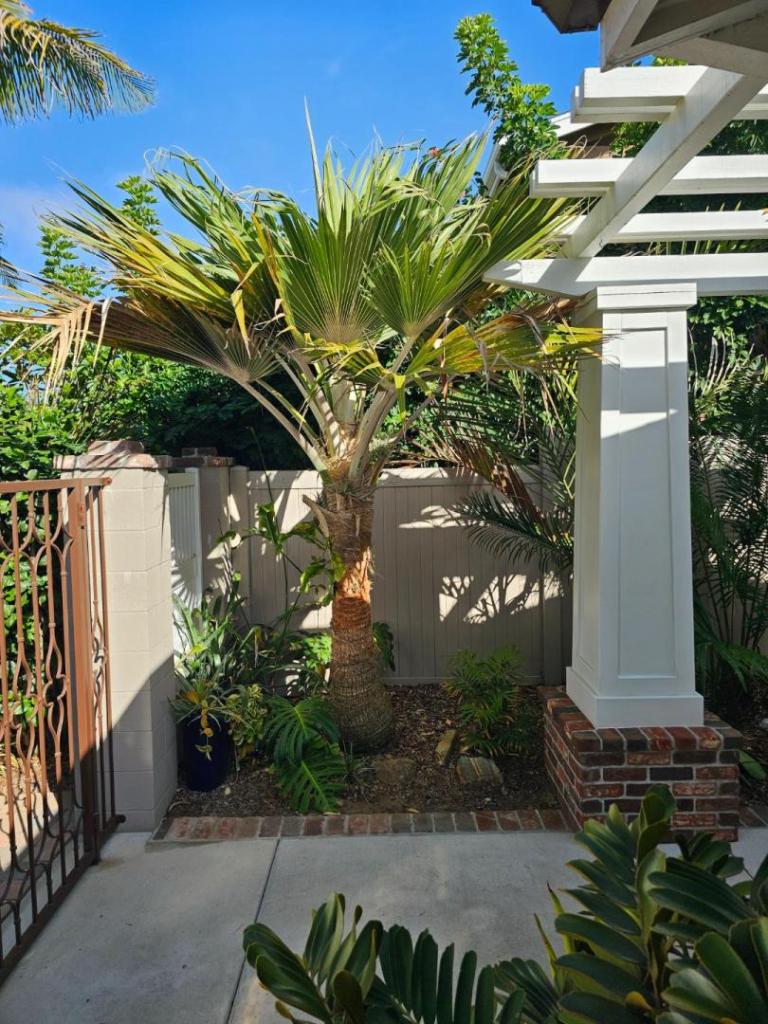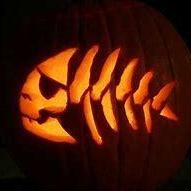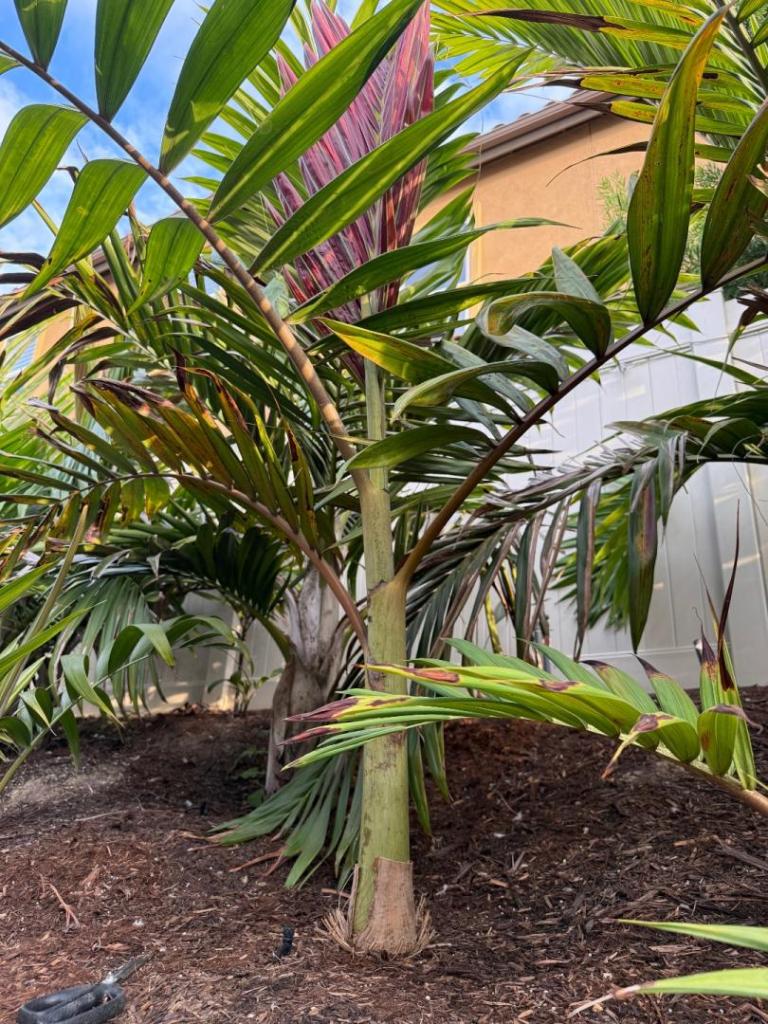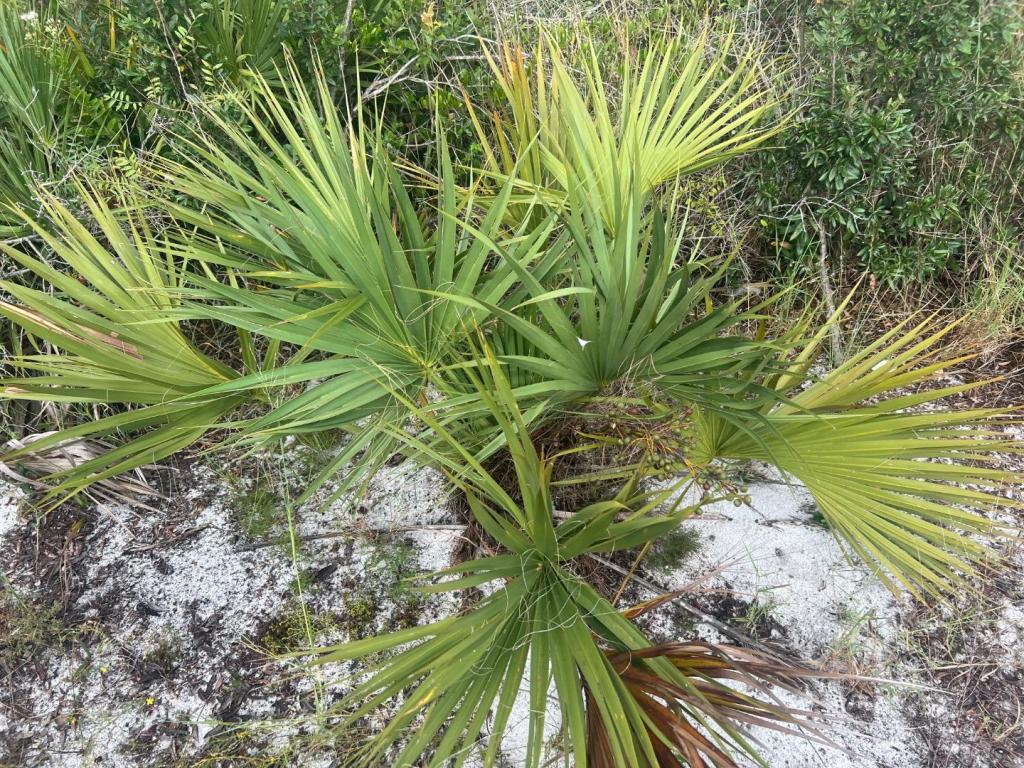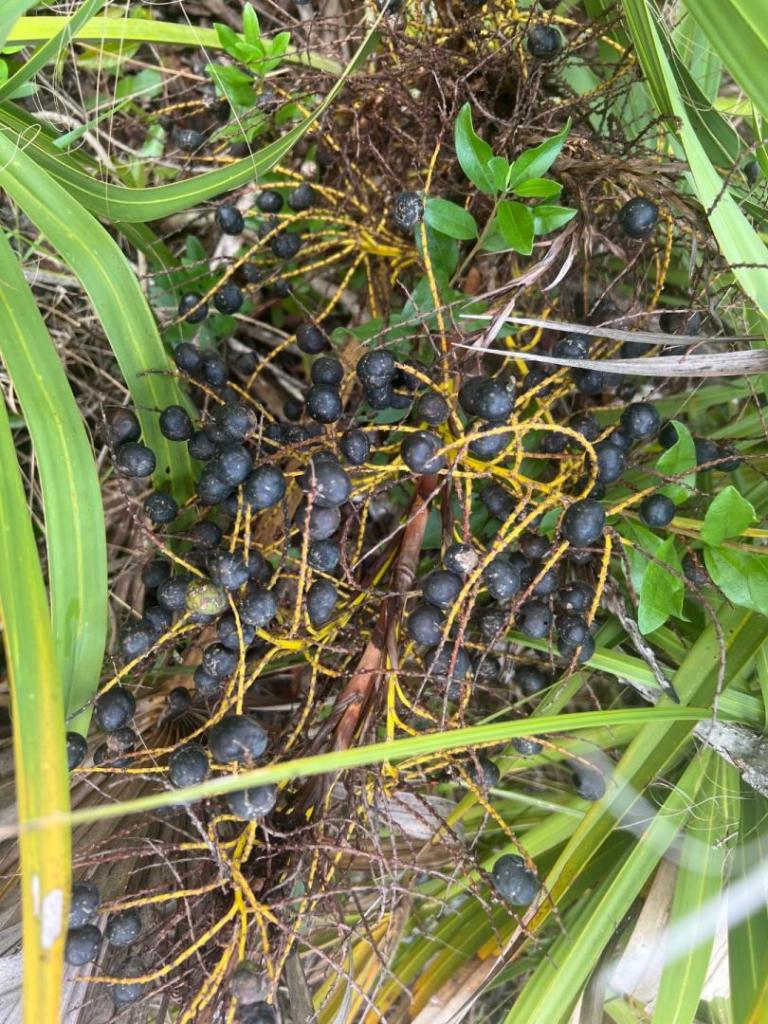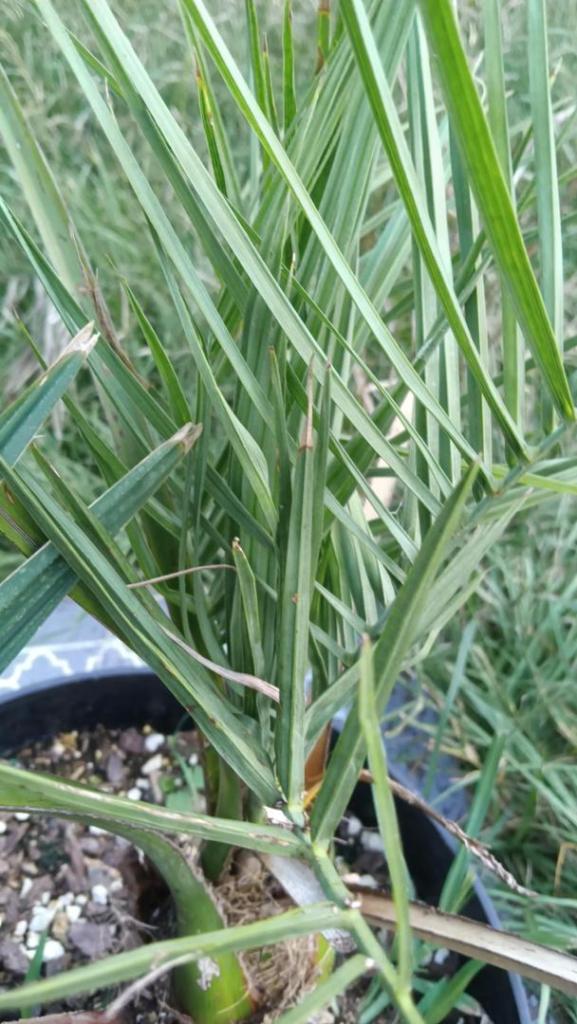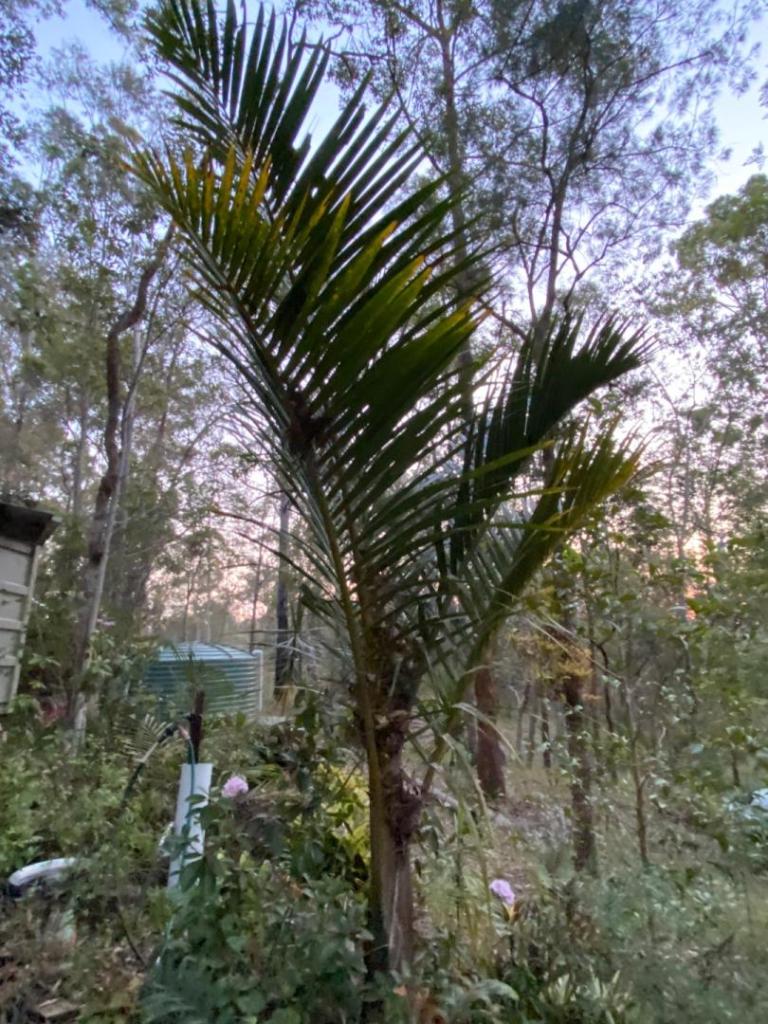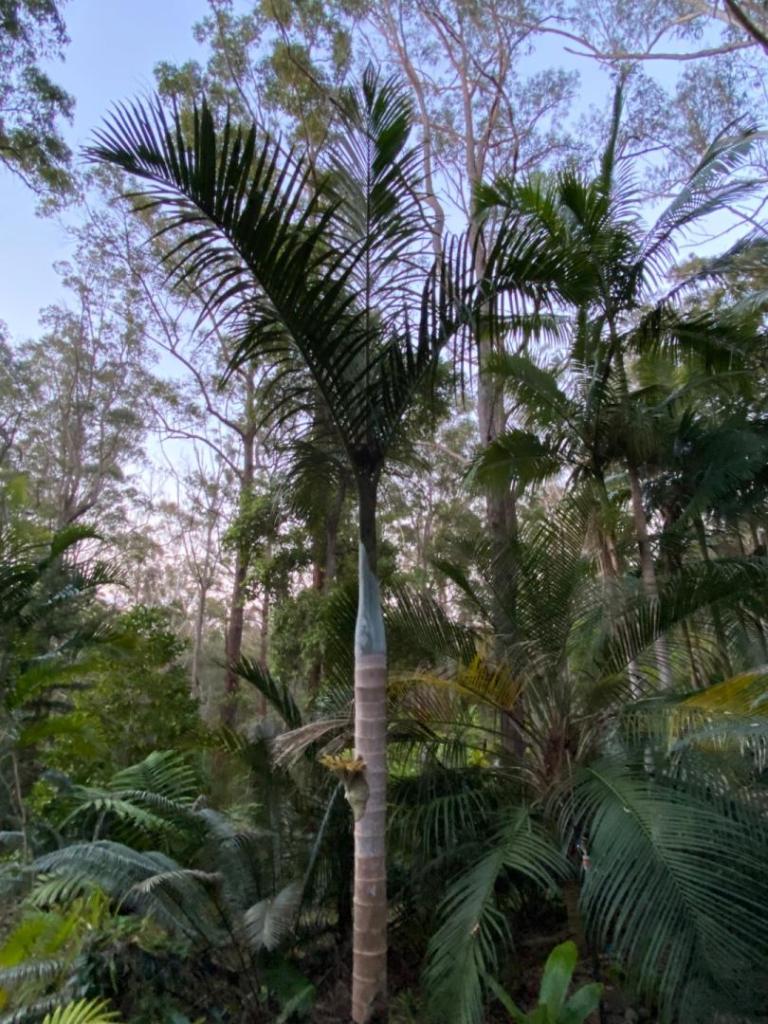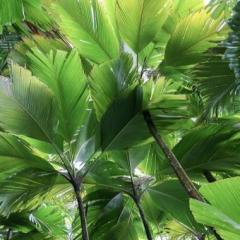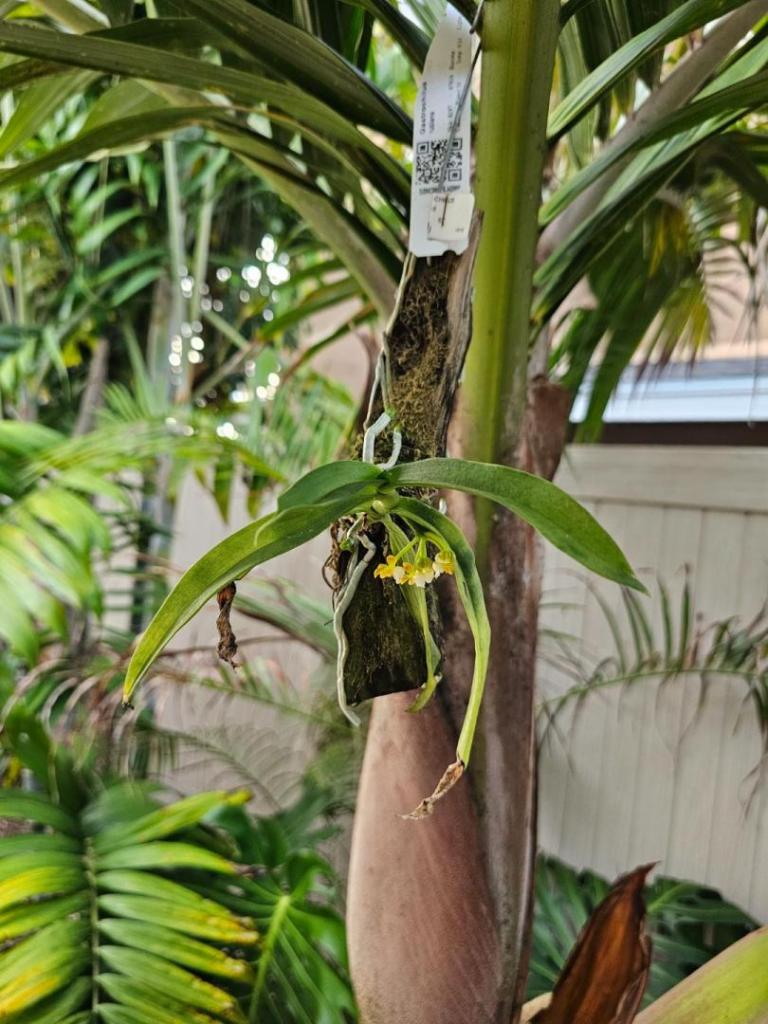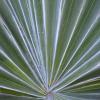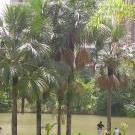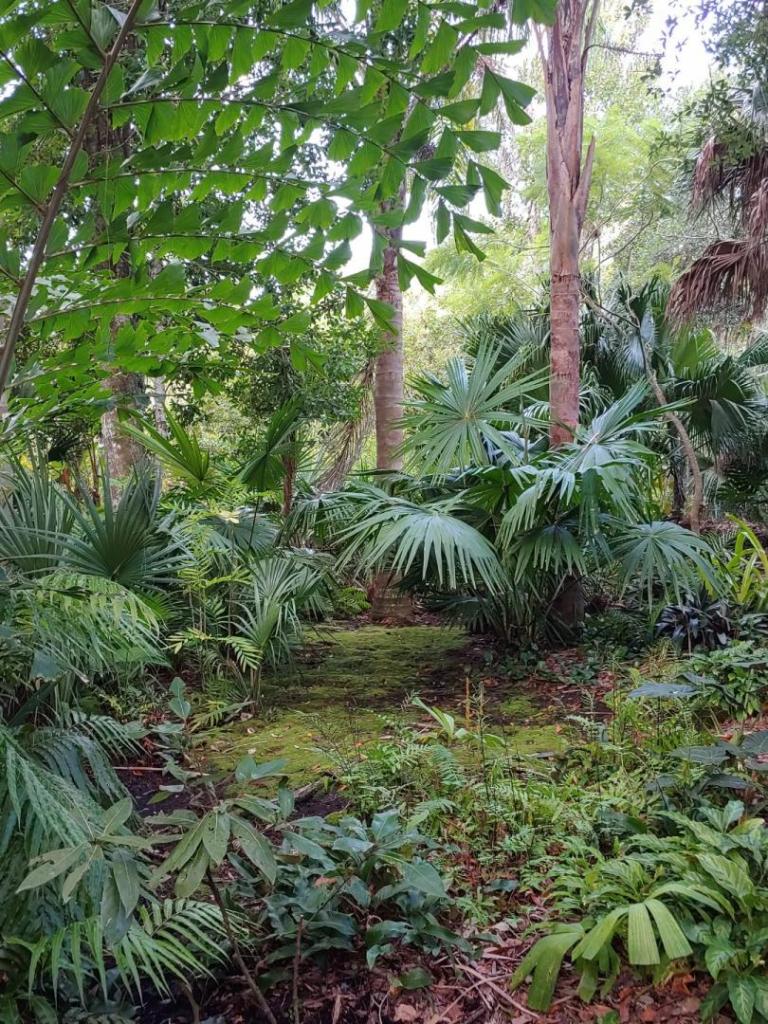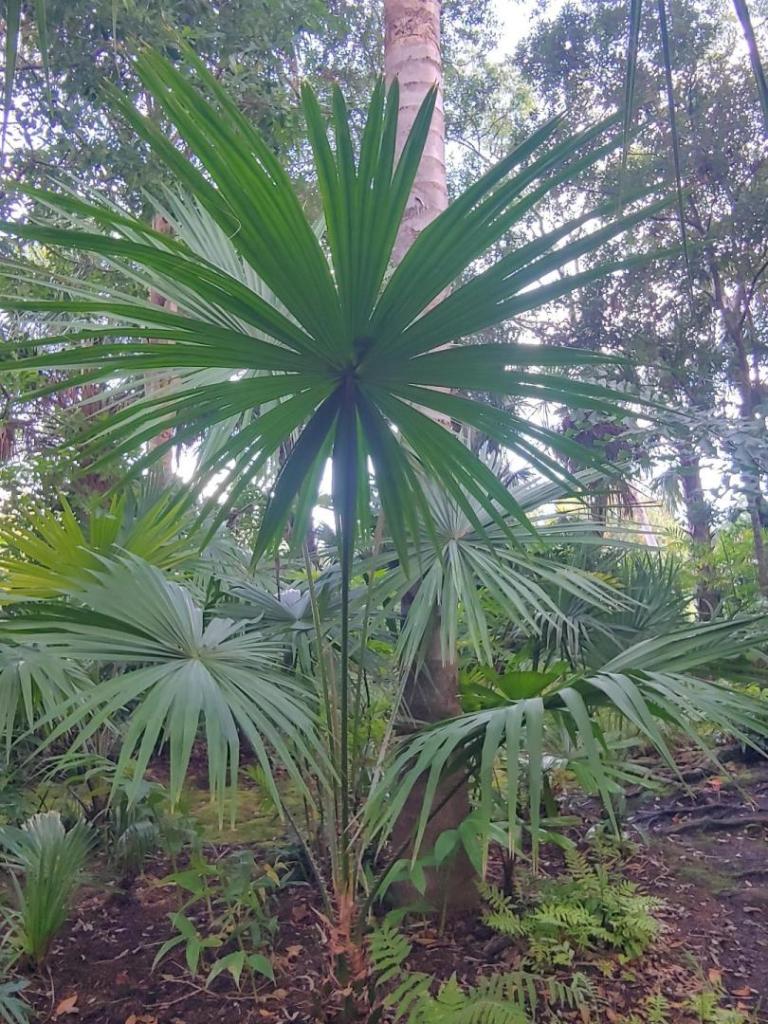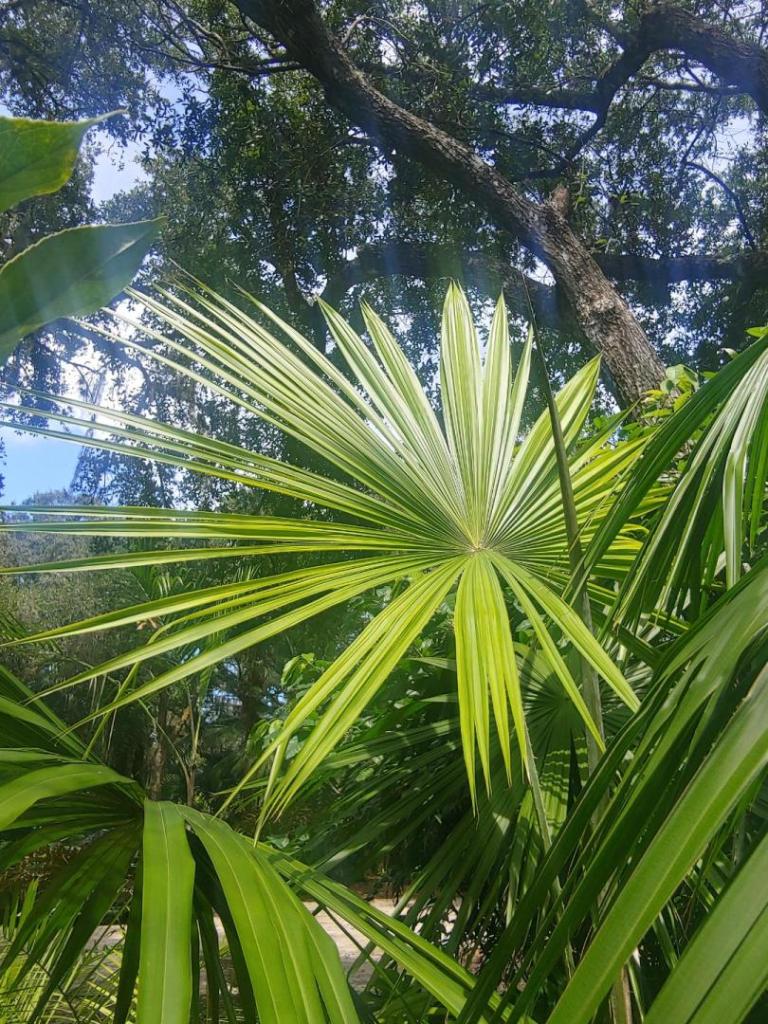Leaderboard
Popular Content
Showing content with the highest reputation on 10/11/2025 in all areas
-
9 points
-
The 11 year old Trachy really exploded this season. It’s also beginning to bend south toward the sun. I didn’t do any before or after measurements but it seems to have grown 1’ or maybe a bit more. The top 1/3 of the canopy is all new. The winter help it gets are some lights wrapped around the crown and only turned on in teens or single digits. I also wrap the base of the trunk in black landscaping cloth to draw in the sun’s radiated heat on sunny days. The Medi grew extremely well, too. Going to have to get creative with the protection this winter. It seems t be outgrowing what I’ve used so far. The McCurtain is really quite a no protection wonder. Literally zero winter damage with zero cover for 8 or 10 winters. It’s got a blue tint to it I really like. The Needles just keep on growing with zero protection. The small Trachy that will be treated like the big one. And the Brazoria…not the greatest for my region as the leaves damage starting in the teens but it pushes new ones out pretty fast and they’re huge! Oh yeah…that “accidental Butia” that turned into a seeded Brazoria (see lower left bottom corner of the small Trachy pic) I’ll just cover with leaves when temperatures hit the 20’s F. Hope everyone’s summer produced a lot of growth.5 points
-
It’s only took 6 years (from emigrating) for me to plant a palm in the ground!!! Had to resist the urge to put two or three in this spot, but eventually common sense prevailed and I went for a solitary Cyphophoenix elegans. Due to poor sub-grade, entire bed was excavated 0.5 m deep and replaced with good quality soil mix, topped off with a decent helping of tea tree mulch. I’ll continue to update this thread as each new species goes in.5 points
-
Chamaerops ‘cerifera’ has very underrated hardiness. Few species are more leaf/bud hardy here in north Louisiana—Needle palm, Sabal minor variants, and maybe Trachycarpus (which struggles due to heat here). Four or five winters of 7B really only resulted in minor leaf burn and no loss of trunks. The green cultivar by comparison was total defoliation and loss of 20-100% of trunks. Cerifera is leaf hardier than the trunking Sabals, a Washington filifera, Brahea, Butia, Serenoa, nannohrops, and Jubaea. and my hardiest green version (little trunk loss but routine 100% foliage burn). Unfortunately this particular specimen has some sort of frond form that is sort of an ugly “never-fully-opens look”. Silver Serenoa repens for comparison… much less bud and leaf hardy but recovers fast from suckers4 points
-
4 points
-
They do have the hybrid vigour gor cool tolerance, to my understanding this is what makes them so popular in the cold climates. Would I plant another hybrid species not really, from a conservation point. These ones have been in the garden for 25 years.4 points
-
The yellow splotches in the first image are severe potassium (K) deficiency. This is the most common nutrient deficiency, as K is water soluble and is leached out by irrigation. Use a broad spectrum fertilizer, ideally with the macronutrient ratio of 3-1-3 for the N-P-K. You can also apply an organic called greensand (gluaconite) for slow release. This has the advantage of being very safe, with no risk of overdose. The affected foliage will not recover, but the new growth will eventually be free of this problem.4 points
-
3 points
-
3 points
-
3 points
-
I have done my part. I have 6 different Pritchardia in ground here in Leucadia and 3 more in Carlsbad. My biggest concern at this point is the evil South American Palm weevil. Bret has shared how he has lost at least a couple to the weevils here in San Diego County. The fastest growing species I have is Pritchardia affinis which has been lumped into Pritcharedia maideniana. I can't reach the old fronds to remove them from the one in Carlsbad with a 14' pole saw without also climbing up a ladder. It is reluctant to drop dead fronds a bit like Washingtonias. That said, I'm partial to the smaller or at least slower growing ones like the namesake for this thread That said, it is fun to stand under the "umbrella" leaves of my Pritchardia beccariana with my granddaughter during a rain. She likes Papa's umbrella's in the garden.3 points
-
Not likely long term palms for Jacksonville.3 points
-
Aww, that's nice of you Giuseppe. You are right, they are Ch. metalica, under a big ernesti-augustii, they are similar to Ch. tenella when young. I don't know what became of Mohsen, but for myself, I am not home much anymore, we are usually travelling and camping often off-grid in our off-road caravan. When we come home the garden gets a quick tidy up and we are off again for another few months. I am not an active gardener now, more a hiker and fisherman. Although I don't have much to contribute anymore I do log on occasionally because I do also miss you and all of the old gang on there, and of course to look at the pictures.3 points
-
I rather boldly left mine out all winter and it coped fine so in it goes. Neither parent would stand a chance outside here!3 points
-
@Pal Meir doesn’t stand a chance🤣 I only discovered it yesterday, it’s been in the greenhouse for about 2 years now. Not getting any special attention at all. I lucked up for sure! But if I do decide to get rid of it I will give pal a call and see hat he’s offering in the way of arms and legs cause that’s what it will be going for!🤣3 points
-
Lookin great. Appears as though a few other things are also doing well in your area.3 points
-
3 points
-
Hi James there pretty well much the same in both traits of growing speed and size, just add water as you know they love it, but a lot larger flowers. Grow them if you got them!3 points
-
3 points
-
My guess is if Brahea are slightly more tender than Washingtonia robusta or even filifera, that could be why they lack? But the very few Brahea do look OK where I am (Las Cruces & El Paso), so I would guess their cold limit would be in T or C or Alamogordo. Nannorhops are probably never sold, unlike in AZ or Las Vegas. I would also add Sabal mexicana seems worth planting in ABQ, but like too many Washies, they need adequate room to grow and not cause damage to paving or their own root systems - far more than they "need" some perceived microclimate benefit of cramscaping. Cramscaping never ends well, especially for the plant. Central New Mexico's desert valley, along the Rio Grande (Socorro to Bernalillo, inclusing ABQ), just seems to experience too many freezing hours and coldest temps most winters, that make it much harder for slightly less hardy palms than my area. But nobody will know until they make an educated try - and - gives those palms room to develop.3 points
-
3 points
-
2 points
-
2 points
-
2 points
-
Thank you it’s a fantastic little palm, and as you say so underrated. Perhaps the slow growth in comparison to rhapis palms deter the commercial industry that and seed availability, I guess rhapis set thousands of seeds in there native country. Intresting you say it’s a good one for the cold harsher conditions obviously not mega frosts but a good patio plant for the cold climates. I did get one seed once with out assistance, that then got me more interested in the varietie. And did one year a little hand rub and got a few more seeds, but then I went to town and got the paintbrush doing it daily brushing them, and had great success. Through observation you learn when to do it and for how many days after you start. But definitely get the paintbrush out you will be surprised, good luck and happy gardening. Richard2 points
-
I wanted to get more pics, but Mom is in the hospital again and Sancho's been freaking out and he was dragging me around the yard so all I got were these 2. After I asked a few times, I can finally confirm that yes, the Butia x Lyto that saw 9°F in a pot unprotected is in fact pushing out an entire new crown. And a nanner in a bucket. I think once my perlite shows up I'll just go ahead and put them all in buckets. Might as well. Still waiting on the Hawaiian papaya seeds to show up. Found some stuff that we've been meaning to return around the house and got a refund without having to send it back. I slept in Mom's room last night since Sancho won't leave and keeps freaking out looking for her. Opened Mom's bathroom cabinet looking for the Charmin and saw TONS of skincare stuff. Tons of the same stuff. So I looked on eBay and some of this stuff... People are paying $140 for a bottle of this lotion, $130 for this body wash, $350 for this perfume - so I told her we should sell it. So my eBay algorithm is forever ruined, but we can get the AC fixed since my die cast cars aren't selling.2 points
-
No. This was a total waste of time and money. And palms.2 points
-
2 points
-
Congratulations. Papayas have pretty sensitive roots. I like to start them in some sort of soil/media like you have done, rather than using paper towels.2 points
-
I believe I bought "Truth or Consequences" seed from Ian and the "Desert Northwest" website about 20 years ago. The trunks are self-cleaning. If you leave the browned-out fronds on a year they will pull off cleanly with a light tug. After two years they will start falling off en-mass in wind storms. I don't think we are dry enough here to have a skirt stay on to the ground like you see in the desert.2 points
-
And by the way... this palm above is NOT Brazoria. I have two of this mystery palm in my yard and they were being sold as Sabal 'minor' possibly var 'Louisiana' back in the day out of Florida... huge specimens in big 30-55 gallon white bags. I first saw them at raintree nursery in Silverton Oregon, bought two, and then ended up returning them because we ended up moving to Louisiana before I could plant them. Knowing Sabal minor notoriously does not transplant at large sizes, I wonder how many of these big bagged specimens actually lived. Then on our move to Louisiana, we stopped at a little hobbiest-level nursery in Tyler, Texas and purchased a 3-gallon version of this same palm. He also noted the source of these 'Louisiana' variant was a grower out of Florida who sold many in large white bags. In my opinion is way too costapalmate for typical Sabal 'Louisana'. Also, no matter how heavy the snow/wind load these fronds never will break downward at the hastula the way "Louisiana' and 'Brazoria' will. These are extremely heavily built palms-- way stiffer and stouter than my mexicanas, which are a massive palm in their own right. The leaves are more cold hardy than mexicana and palmetto but not as much so as Sabal minor or true "Brazoria'. Seed stalks are straight up and held above the foliage like Sabal minor variants would do but seeds are a bit larger than normal minor but nowhere near the size of Sabal mexicana. I tend to think this is either some sort of Triploid Sabal minor variant or a hybrid between sabal minor and a large Caribbean sabal. Here is a photo of the larger of my two:2 points
-
A lovely looking palm in a class all of its own. Not particularly a fan of hybrids, this one git into the collection many years ago and was created by Wanttana Summowong. The flowers will be removed if and when it flowers, just to prevent any. Ross contamination, not that there are any others flowering.2 points
-
Those stems are beautiful. I'd steal them from you. I hope to germinate them soon, Richard. My RPS order is on its way.2 points
-
About the "red". Wild pure filifera in native groves, some seedlings have shown red. I personally believe it to be a soil thing. I can turn it, off and on, in my yard, by applying fish emulsion(acidic). I have also seen it with pure filifera seed, and seed from the same batch. Planted in my alkaline yard/soil, lack of red. Plant in potting soil, or other highly organic matter, red more likely to be present. Now when the fourth or fifth leaf appears, the strap leaf disappears very quickly, and a strongly divided and pleated true leaves begin to form. This is when the true difference and ability to identify begins. This takes about four to five months in my climate, from sprout to true leaves. Probably longer in most types of pots other than deep liners.2 points
-
I planted them in ground at a 2-3 gallon size. Soil is light loam here, and my property unfortunately has a lot of disturbed (from construction) reddish subsoil mixed in. Clearly they prefer this over the spots with more organic matter mixed in. I did have two die in good location after thriving for years… not sure why… almost like some sort of borer got them and then cold finished them off, but found no bore holes.2 points
-
They can be a plain old rhapis, but if you get just one single stem by itself they look like a beautiful licuala! Richard2 points
-
Back in the 2006-2009 range they used to have hardy palms in 3 gallon blue pots at Home Depot and Lowe’s— mostly ceriferas, needle palms, and Sabal minors. They were maybe $14.99 to $21.99 regular price and if you waited till late in the season you could get them for 70% off. I bought them by the truck load for $5-$7. There were some 5 and 15 gallons too, and some Serenoa and Butia as well. Have some mass plantings of them elsewhere2 points
-
2 points
-
2 points
-
Darold's suggestion of greensand is what fixed it for me. I haven't had this on a Rhopie, but a Howea belmoreana and a Chambeyronia hookeri were badly affected and both look much better a year later. Buy a good sized bag, it goes pretty fast. You will have better results if you can work it into the topsoil (I have heavy mulch and it worked eventually).2 points
-
2 points
-
I just have the more common Hilibrandi that I brought home from Maui years ago . It grows very well here . The only trouble I had from it is a bit of brown edges on the newly opened fronds after winter , but that stopped a year or so ago. It has been in the ground about 25 years , planted close to the house as a seedling . I was told , back then , they are a bit cold sensitive and I thought the placement would offer protection but I don’t think it needed it . I never fertilized or fussed over it , just lots of water . Harry I had to trim it on the path side of the trunk because it was right in the way . That stopped earlier this year . The lowest frond on the path side is now well over 6’ up ( my height!) . The trunk is curved at the base , pushing its way out into open area. This was last year , it has really picked up speed in the last few years , very slow the first 5 years. A great palm for southern California , even inland . I don’t get frost here where it is planted and seems to cruise through heat waves. Harry2 points
-
Me and Sancho went to pick her up a few hours ago, she's good. Thank you for that, Harry. I was shocked to see that people out there in eBay land are regularly paying $140 for this lotion and shower gel though. Best believe I put everything that's sold for over $50 in the last 90 days on there though (with mom's permission of course and we're splitting it) My algorithm is WRECKED right now.1 point
-
1 point
-
Palmgain is an excellent product. Frequent light applications of fertilizer are better than infrequent, heavy doses. https://edis.ifas.ufl.edu/publication/EP2731 point
-
1 point
-
Looking for Ptychosperma Paddle Leaf seeds or seedlings in the US. Thanks in advance1 point
-
Crikey mate, you have to give at least 24hr for everyone in the world to see it not 8. Yes, I wish that I could help you with more advice than that too. Cheers Steve. :)1 point
-
Tom, I planted P. schefferi in early January of 2011. Not the best time to plant things to say the least but I just couldn't resist. At the time of planting it had 4 growth points. 3 had pinnate leaves and one still had simple ones. This is what it looked like when planted. Our January and February were pretty mild and the lowest it saw was 40F. On that night wrapped the growth area with a towel and covered it with freeze protection fabric. It still partially defoliated and I soon pulled a spear out of the most developed growth point. I'm hoping this happened because it didn't properly establish itself, because if it gets that damaged at 40F with protection, there is no way it would live through my winter. Anyway on the positive note, I gave it some peroxide and it soon started growing. Slowly at first, but really picked it up in the summer. This is the most recent picture. I got about two feet of growth on the very stem where the spear was pulled. Most of it during the summer. Growth rate slowed down significantly since we stopped getting our daily summer rains. The rest of the stems didn't grow as much and the smallest one still has simple leafs, produced only two of them since it was planted and is still below ground. I'll tell you if it makes it through the winter and continuous to grow like that it would be a striking palm in just a couple of years.1 point
-
George, Your photo of P. schefferi is not. Schefferi has wider leaflets and the terminal leaflet is usually much more wider. The overall look would resemble more closely to a P. mac. but with many of the terminal leaflets being bigger. Sorry, I don't have a picture, but I'm sure someone else will chime in. Jeff1 point






